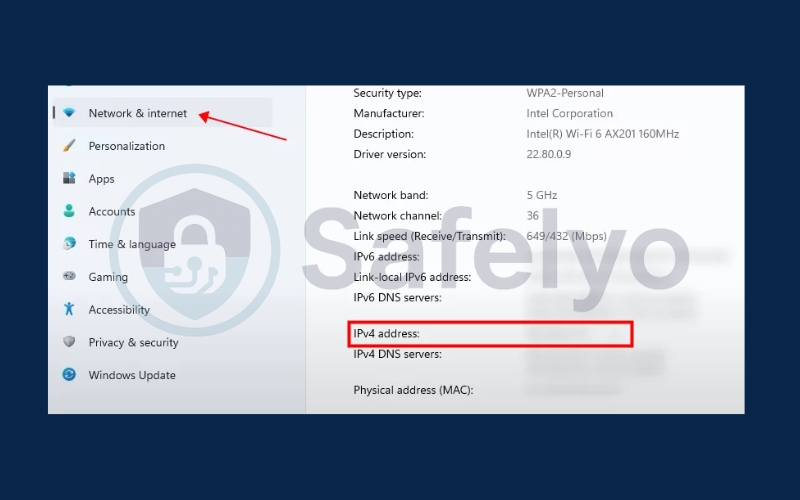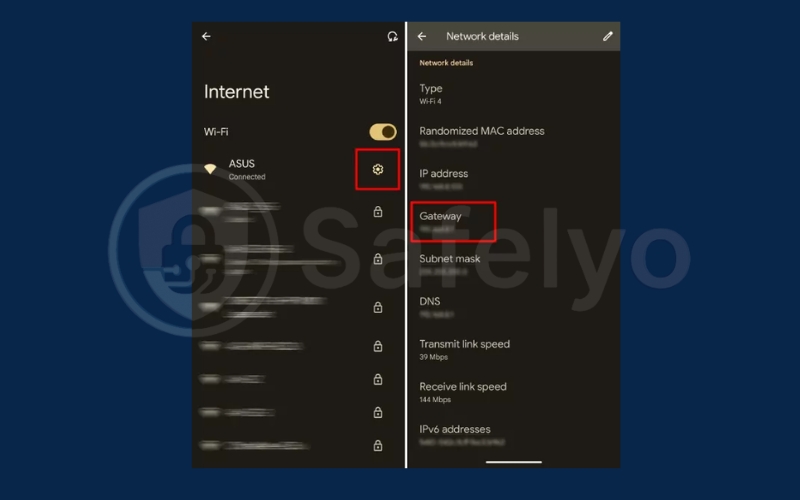Have you ever wondered who is connected to your Wi-Fi or what websites are being visited through your network? Unmonitored router activity can not only slow down your internet but also expose your home to security risks. That’s why learning how to monitor internet activity on your router is an essential step for protecting your digital environment.
In this guide, you will discover:
- Whether you can see the websites visited on your Wi-Fi.
- Why monitoring router activity is critical for security and performance.
- Step-by-step methods to check internet usage from desktop, mobile, or with third-party apps.
- Practical tips to improve monitoring and strengthen your network safety.
Keep reading to take full control of your Wi-Fi and ensure that every device on your network is secure and accountable.
1. Can I see what websites have been visited on my Wi-Fi?
Yes, in most cases you can. Routers keep logs of internet activity that may show the IP addresses, domains, or even full browsing history, depending on the model and settings. However, some routers only provide limited visibility, such as device connection logs rather than detailed website records. For deeper insights, you may need advanced router settings or third-party monitoring apps.
2. Why you need to monitor internet activity on your router
Monitoring your router is not just about curiosity, it’s about safety, control, and efficiency. When you know what happens on your Wi-Fi, you can protect personal data, ensure fair bandwidth distribution, and prevent unwanted use. Below are the main reasons why monitoring is essential.
2.1. Protect your network from intrusions
Your router is the gateway to your entire home network. By checking activity logs, you can quickly spot unfamiliar devices or strange traffic patterns. If an intruder has connected, you’ll know immediately and can block them before any data is compromised.
2.2. Manage bandwidth usage
Slow internet can often be traced to one device or app consuming most of the bandwidth. Monitoring allows you to see which users or applications are hogging resources so you can adjust usage, prioritize streaming, or restrict downloads when needed.
2.3. Identify connected devices
At any moment, you should know exactly who is using your Wi-Fi. Router logs make this possible by listing connected devices with details like IP addresses and connection times. This is especially useful if you share your Wi-Fi with guests or live in an apartment complex.
2.4. Monitor children’s online activity
For parents, monitoring isn’t about spying. It’s about guidance and safety. By keeping track of visited sites and screen time, you can ensure your children are accessing safe, age-appropriate content and balance their online and offline activities.
3. How to monitor internet activity on your router
There are different approaches depending on the device and tools you use. You can log in directly to your router from a computer, use a mobile app from the manufacturer, or rely on specialized third-party applications.
3.1. Monitor internet activity on the Wi-Fi router on the desktop
If you prefer using a computer, the router’s admin panel is your best option. Here’s how:
Step 1. Locate your router’s IP address
On Windows: Open Start > Settings > Network & Internet > Wi-Fi > Properties. Scroll down until you see the IPv4 address.

On Mac: Go to the Apple menu > System Preferences > Network > Wi-Fi > Advanced > TCP/IP. Your IPv4 address will be displayed there.

Step 2. Access the router’s login page
Open a web browser and type in your IP address in the search bar. If you are using an ASUS router, you can go directly to https://www.asusrouter.com.
Step 3. Log into your router
Enter your username and password on the login page. Make sure you are using the correct credentials provided by your ISP or the router manufacturer.

Step 4. Enable browsing history tracking
From the menu, select Adaptive QoS, then click on the Web History tab. This feature is usually disabled by default, so switch the toggle to turn it on.

Step 5. View browsing history
After enabling the setting, wait a few seconds. You will now see a list of visited domains displayed under the Domain Name section.

This method works well if you want raw, router-level information without relying on external apps.
3.2. Monitor internet activity on Wi-Fi router on mobile
Most modern routers come with official apps that make monitoring simple from your phone. To use this method:
On iPhone
Step 1. Open Wi-Fi settings
Go to Settings on your iPhone and tap WLAN.
Step 2. Check network details
Tap the small “i” icon next to your connected Wi-Fi network.
Step 3. Find your router’s IP address
Scroll down to the IPv4 Address section. The Router field will display your router’s IP address.

Step 4. Copy and paste the IP address
Long-press on the IP address to copy it, then paste it into the search bar of a web browser (for example, Safari).
Step 5. Access browsing history
You’ll be directed to your router’s login page, similar to when using a desktop. Enter your credentials, then go to Adaptive QoS > Web History to check the browsing activity.

On Android
Step 1. Open network settings
Go to your phone’s Settings and tap Internet (or Connections, depending on your device).
Step 2. Access Wi-Fi details
Select the connected Wi-Fi network and tap the gear icon to open its settings.
Step 3. Locate the router’s IP address
Scroll down to the Gateway section. Here, you will find your router’s IP address.

Step 4. Open the router page
Copy the IP address, then paste it into the search bar of a web browser on your phone.
Step 5. Check browsing history
Log in with your router’s credentials, then follow the same process as on iPhone: go to Adaptive QoS > Web History to view the internet activity.

3.3. Monitor internet activity on router by third-party app
If your router does not offer built-in tracking features, you can use a third-party monitoring tool such as GlassWire. This program runs directly on your computer and provides real-time insights into your internet usage.
With GlassWire, you can see detailed information about data transfers, including which websites and applications consume the most bandwidth. It also offers custom alerts to notify you when you are close to your data limit and allows you to set usage limits for specific devices or apps.
Using a third-party tool like GlassWire is especially useful if you want a visual dashboard and more control over your network activity without depending solely on your router’s settings.
4. Tips for effective monitoring and security
Simply checking logs is not enough, you should also apply best practices to strengthen network security and make monitoring more efficient.
- Change default router credentials: Default usernames and passwords are easy targets for hackers. Always replace them with strong, unique credentials to keep outsiders from accessing your router’s dashboard.
- Enable notifications for new devices: Most routers and apps allow you to set real-time alerts whenever a new device connects. This ensures that you can immediately verify if it’s a trusted device or an intruder.
- Update router firmware regularly: Router manufacturers release firmware updates not only to add features but also to patch security vulnerabilities. By updating firmware regularly, you protect your network against known exploits.
- Use parental controls if needed: Parental controls are more than just website blockers. They let you set time limits, restrict categories of sites, and monitor online behavior. This ensures children are protected without limiting their learning and creativity online.
- Segment your network for security: Consider creating a guest network for visitors. This keeps their devices separate from your main network, reducing the risk of malware spreading to your personal devices.
- Use encryption and strong Wi-Fi passwords: Always enable WPA3 (or WPA2 if WPA3 isn’t available) with a strong password. Weak encryption allows outsiders to bypass your monitoring efforts and access your data.
Read more:
5. FAQs – How to monitor internet activity on your router
When it comes to managing your home network, many users have practical questions about monitoring router activity. From checking websites visited to managing devices remotely, these answers will help you understand the essentials of how to monitor internet activity on your router and keep your connection secure and efficient.
How often should I check internet activity on my router?
It’s best to check router logs at least once a week. Regular monitoring helps you detect unusual traffic, new devices, or security risks before they become bigger problems. If you share your Wi-Fi with many users or have children, more frequent checks are recommended.
Can I monitor my network remotely?
Yes. Many modern routers and apps allow remote monitoring, which means you can log in through the cloud or via mobile apps even when you’re not at home. This is especially useful if you travel often but still want control over your home network.
Will monitoring slow down my internet?
In most cases, monitoring does not significantly affect performance. Router-level logging is lightweight. However, advanced monitoring tools that log every packet in real time (such as Wireshark) can consume resources and slightly reduce network speed.
How can I block unauthorized devices?
You can block them directly through your router’s admin panel. Options usually include blacklisting the MAC address, pausing internet access, or changing your Wi-Fi password. For best results, combine blocking with strong passwords and guest network isolation.
Can I see the detailed browsing history of each user?
Some routers only display domains or IP addresses rather than full URLs. If you want detailed, per-device browsing history, you may need to use third-party apps or parental control software. Keep in mind that monitoring should always respect privacy laws and household agreements.
6. Conclusion
Learning how to monitor internet activity on your router is an essential step toward maintaining both security and efficiency in your digital environment. By making use of router logs, mobile access, and third-party monitoring tools, you gain the ability to oversee your network with confidence.
In summary:
- Track the websites visited and monitor connected devices.
- Safeguard your network security, manage bandwidth usage, and guide children’s online habits.
- Strengthen protection by applying firmware updates, changing default credentials, and enabling guest networks.
By taking a proactive approach, you ensure a safer, faster, and more reliable internet experience for everyone in your household. For additional expert insights, visit the Tech How-To Simplified category on Safelyo and take full control of your digital world.





